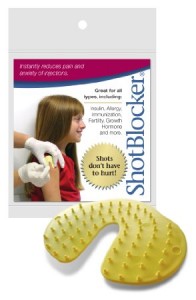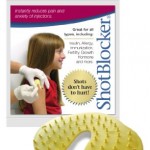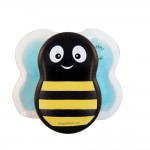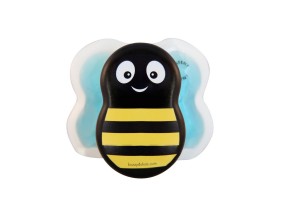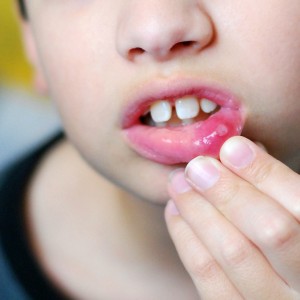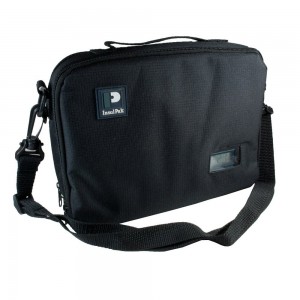Kineret® (anakinra), is FDA-approved to treat the NOMID (Neonatal-Onset Multisystem Inflammatory Disease) form of CAPS (Cryopyrin-Associated Periodic Syndromes), and approved to treat all forms of CAPS in the European Union. Kineret is also approved for treating rheumatoid arthritis. However, it is also often prescribed for off-label use for other diseases, and is being studied in clinical trials for several other autoinflammatory conditions.
This medication works very well in helping to control inflammation related to Interleukin-1ß, that is often elevated or involved in a number of autoinflammatory diseases, but especially in patients with CAPS. Anakinra is an interleukin-1 receptor antagonist, so it blocks the cellular uptake of Il-1ß. This drug helps many individuals to live a more normal healthy life if they are able to get their inflammation under control.
The challenge is that this medication is given as a subcutaneous injection, in most once a day, and there’s no denying that this shot is painful. This is because the medication is preserved with sodium citrate, a form of citric acid, and has a low pH of 6.5, making it acidic.
Anakinra is not alone in being a painful injection, as a few other biologic medications are also known to be very uncomfortable injections, such as Enbrel® (etanercept) and Humira® (Adalimumab).
Here are some tips for making this shot less painful for your child, or yourself. Since everyone reacts differently, you or your child will find some of these tips work well, while others may not be effective or may even make the pain of the shot worse. Try different tips to develop a routine that makes using Kineret most comfortable for you and your child.
Warm it Up
Kineret is stored in the refrigerator. Before giving the shot, you can take it out of the fridge for about 20 to 30 minutes to warm it to room temperature. Some warm it by holding it their hands for a few minutes. Almost all patients do report that a room temperature shot is less painful than a cold shot directly out of the fridge.
Reviews of this tiny plastic device are exceptional. On one side it has small nubs that are uncomfortable, but not painful, when pressed to the skin. When it’s pressed to the skin during the injection, it confuses the brain for a few seconds acting as a form of distraction. Essentially the brain focuses on the annoying nubs and doesn’t pay attention to the injection. This works especially well for kids and it is cheap to buy.
The Buzzy bee is another distraction tool that vibrates. You place it above the injection site as you give the injection. As it vibrates, it works like the ShotBlocker and distracts the brain. You can use the ShotBlocker and the Buzzy together, but you’ll need extra hands to do this.
Aim for Fatty Areas
This is a subcutaneous injection. Aim for injection site areas with the most fat. For this reason, some say the belly is the best, while others prefer the back of the arms.
Ice the Injection Site
Some report that icing the injection site right before the shot helps alleviate the pain. This does tend to be very individual however. Some say it makes the injection hurt worse.
Warm the Injection Site
If icing the injection site did not help you or your child, try warming the injection site first. You can do this by placing a warm towel over the area for a few minutes before giving the shot.
Inject Slowly
Some patients prefer to inject the medication slowly. They will push a tiny amount in, stop and take a breath, and then push a little bit more in and stop and take a breath. The injection tends to hurt more as the volume that is injected into the tissues increases as the medication is administered.
Inject Quickly
Some cannot handle doing it slowly and just inject as quickly as possible to get it over with. For very young kids, you may have no choice but to do it quickly if your child moves too much during the shot.
Rotate Injection Sites
Sides to back of the arms, thighs, and stomach are the common locations for these injections. Do rotate each day where you give the injection. This can help reduce the injection site reactions in any given spot.
Even though people may prefer one area over the rest of the acceptable places for the injection on the body, it is essential to rotate the injection sites, according to the instructions on the medication box. Do not keep using the same area every day.
Overuse of one injection site can lead to deeper tissue injury, and can be more sensitive, or develop more scarred tissues so it is harder for the medication to be efficiently absorbed into the body.
Use a Smaller Needle
Many patients transfer the medication into a smaller gauge needle, such as those used for insulin. The smaller needle can help reduce the pain. Have a nurse or doctor show you how to safely transfer the medication, and how to properly calculate the dose since insulin syringes are marked in units, versus mls before trying this method. The use of another syringe instead of the pre-filled anakinra syringe requires a prescription.
For kids and adults, distracting from the pain is the most effective way to lessen the shot pain. And the same techniques can work for both kids and adults. Try sucking on candy, watching a video or perpetual motion toy, or chewing gum and blowing bubbles. For more about using distraction techniques, click here.
Also, download a copy of our “Healthier Ever After” injection tips book full of helpful tips and fun ways to help your child with their injection experience, and develop coping techniques.
Click here for Kineret informational videos that includes step-by-step injection instructions.
Click here for more tips and resources for patients on biological medications.
References
- Drugs.com: Kineret
- FDA: Kineret (Anakinra) Prescribing Information
- Rheumatology International: Injection-site reactions upon Kineret (anankinra) administration: experiences and explanations
*Top photo of child blowing bubbles by Samuel Borges, BigStockPhoto.com


